|
It doesn't rain often in LA... but when it does, it's hard to get a ticket?
I recently was given a much coveted ticket and reservation time to experience "Rain Room" at the Los Angeles County Museum of Art. The highly anticipated work was created by designers Hannes Koch and Florian Ortkrass, who are the co-founders of the London based art collective Random International. The exhibit is a combination of technology, engineering, and visual arts. When their powers are combined, the superhero-like forces create a magical environment complete with pouring rain, and dramatically lit vignettes. There are connected panels on the ceiling that emit "rain." Each of those panels have corresponding censors on panels below them. If a panel below is stepped on, it sends a message to the ceiling panel directly above to stop raining, thus keeping the person standing in that square dry. Essentially, the participant is able to walk through the rain, and stay completely dry. Visitors are given an allotted time to show up at the exhibit. Each group consists of about 10 or so people, who are led into the Rain Room together and given some simple instructions. Walk through the rain, experience the exhibit, but no more than 6 people should be inside the rain at a given time or it won't work properly. Here in lied the most interesting part of the exhibit for me - getting 10 total strangers to cooperate in a dark, chaotic, enchanting and time sensitive environment, without saying a word. Immediately, there were some people who stayed on the perimeter, let others go head into the rain. There were those that dashed in for a moment to get a sense of the rain, but then quickly retreated to the perimeter to let others have a chance. And then there were those people. Yes, you know the type. They dashed in. They stayed in. They took selfies. A lot of selfies. Yeah, still more selfies. In the end, everyone had the chance to experience the rain, and the beautiful silhouettes that were created with the single light emitted from the corner. It seems deeply poetic that in the center of a town with a terrible drought, this installation brings together 10 Angelenos at a time, for a symbolic rain dance of sorts. And, for those of you wondering, this exhibit runs on recycled water and has no more of an environmental footprint than eating a hamburger. This is still LA, after all. For more information: http://www.lacma.org/rainroom and http://random-international.com/news/ This weekend I had the opportunity to experience James Turrell's "Perpetual Cell" at LACMA. There are two installations within this exhibit- Light Reignfall and Dark Matters.
The exhibit requires tickets and gives you an allotted time for viewing. Unlike the typical museum experience, "Perpetual Cell" is mostly a solitary experience, and you are not peering over the shoulders of various museum visitors to sneak a peak at any given work of art. When you approach "Perpetual Cell" you first encounter a slightly imposing large white sphere. In the front of the sphere is an institutional looking computer set-up and two attendants wearing white lab coats. The entrance to the sphere is exactly how I imagine an MRI machine to look. It has a long sliding bed that rolls through a narrow entrance, directly into the center of the sphere. Before laying down on the bed, however, there was the matter of signing a waiver, which releases them from liability for seizures, disability, paralysis, or...death. (Wait, are we still at LACMA?!) Additionally, an emergency contact with a phone number is required. Then you’re asked whether you want the “soft” or “hard” experience. (Excuse me? I don't believe we know each other that well, yet.) According to the clinical looking attendants, the hard program has more strobe light effect and the soft program has a warmer blanket effect. After choosing the hard program, I followed the instructions to remove shoes, and take my place on the rolling bed, head facing in toward the sphere. They handed me an emergency remote to end the experience prematurely, and placed Bose headphones on my ears. With a slightly nervous thumbs-up and the release of a long deep breath, they pushed me into the epicenter of the sphere. The entry way felt much smaller than it had appeared from afar, and it felt as if my nose nearly grazed the top of the opening. Finally inside the sphere, closed off from the outside, I took note of my surroundings. A warm electric blue light engulfed the room, and suddenly my sense of depth perception diminished. The walls of the sphere seemed infinite, similarly close yet far away. Immediately, a buzzing noise intensified in the headset, and it peaked with an explosion of kaleidiscopic light all around me. The intensity of the photonic barrage was matched with an electronic hum that lightly guided but did not overshadow the visual experience. The colors flashing in rapid fire cannot be described because I'm fairly certain that they were not in my Crayon box and I'm truly not sure I had ever seen some of them before in my life. Similarly, the crystalline patterns were inexplicably intricate. What I think was about 5 minutes into the experience, I realized that despite opening and closing my eyes, everything seemed the same. I did not feel the difference between having my eyes open or closed, nor did I feel the need to blink. At times the light was soothing and sometimes overwhelming. At one point, I ran my hand across the front of my face, to focus on something at a specific depth, and re-focus my vision. After 12 minutes, the lights returned to a soft glow, and the bed began to move toward the exterior. My nose slipped past the top of the entry, and I was re-introduced to the exterior of the sphere and lab coat wearing attendants. Nearly in unison they ask, "So, how was it?" Unable to really come up with an immediate response, I say, "cool, yeah, really cool, thanks." But it wasn't just cool. It was nerve-wrecking, exhilarating, strange, over-whelming, soothing, inexplicable, and I was admittedly happy for it to be over. I slipped on my shoes, and walked toward the entrance to Dark Matters. At the entrance to the installation was a LACMA employee, who gave the instructions, "Follow the railing, and you're going to turn left, the right, then right again, and then its to the left. You'll find chairs at the end. I'll let you know when your time is up in 20 minutes." So I set off down the hallway, into the dark abyss. Holding the railing tightly, and walking cautiously, wishing I had paid better attention to the lefts and rights that he had instructed. I thought to myself, "yep, that's a wall, turn, yep, hit a wall again, turn" and then the railing ended. I reached my hand out into the infinite darkness and searched for a chair. I couldn't help but get a case of the giggles though absolutely nothing was funny. It was just ridiculous, searching for a chair, in a dark room. Finally, my hand ran over the arm rest, and I quickly took a seat. And then there was nothing. No sound, no light. I opened and closed my eyes, only to realize that once again, it made no difference. Only this time, I ran my hand in front of my face, and I could not see it, despite the fact that it was inches away. So, I thought, if I cant see my own hand, what else is out there, what is this room that I'm in. Is it large, or no bigger than my closet at home? I relaxed into the chair and stared into the darkness. After what must have been ten minutes, a faint green glow appeared in my vision and danced the the movement of my eyes. My eyes had adjusted to the darkness, and the subtleties of the darkness were becoming more clear. Just when I was ready to be done, the familiar voice bellowed through the dark hallway, "Times Up!" With a slight sense of relief, I made my way to the railing, through the winding hallway, and back to the comfort of the exhibition hall. This was my experience at "Perpetual Cell", and it was unique to me, and to my eyes, but I think that's the point. We are each able to see things, and we are never quite sure how the same experience will be shared by another person, or another set of eyes. "Perpetual Cell" begs the question of how much are we really seeing. It creates the juxtaposition between how much is produced and projected by the human mind and how much external influence we are absorbing. The beauty of Light Reingfall is that it blurs the lines of the object and subjective experience, and Dark Matters is effectively the perfect 'sister' installation. All in all, not your average trip to LACMA, and an exhibit well worth experience for yourself. http://www.lacma.org/james-turrells-perceptual-cell-and-dark-matters If you have visited the Southwest, you have undoubtedly seen the abundance of silver and turquoise jewelry for sale. Walking around Santa Fe’s central plaza, you can still see Native Americans offering examples of the artistic traditions they have established over decades. Their work represents a uniquely American art form with a distinctive and beautiful sense of design and craftsmanship. The market for Indian jewelry was initially popularized by the advent of the railroads coming to the Southwest at the turn of the century, giving rise to stops operated by the successful Fred Harvey Company. From those roots in the tourist trade the market has expanded far beyond U.S. borders. Many of the top international auction houses feature regular (and extremely popular) sales of Native American jewelry and draw buyers and collectors from every corner of the globe. This past December at Bonhams Auctioneers, a Hopi bracelet by Charles Loloma (1921-1991) sold for $16,250, and in May at Sothebys, a Zuni silver and turquoise squash blossom necklace by Leekya Deyuse (Zuni, 1889-1966) sold for $23,750. While the strong market and increased interest in collecting Native American jewelry is relatively new, the Navajo, Zuni and other Pueblo tribes have been silversmithing and advancing their craft for over 150 years. What began as iron-working during the Navajo internment at Bosque Redondo (1863-1868) evolved into working with pounded silver ingots and the eventual inclusion of turquoise stones and modern techniques circa 1890. Most early pieces were not artist signed prior to the 1950's. As far as the tourists knew, it was 'Indian Made'. Recent scholarship and the cross-referencing of traders’ notes with museum collections has enabled us to ascribe authorship to many fine early pieces. With these attributions, several artists have risen above the rest of the market and become very desirable to collect. While there are several good books and vast information available on the internet regarding these topics, here are 5 tips for someone interested in starting their own collection of Native American jewelry. 1. Pick a genre to focus your collection: Perhaps you want to focus on a specific tribe such as Zuni or Navajo, or just bracelets or squash blossom necklaces. Another way to focus your collection is by choosing a time period. Generally the safest pieces to invest in were made between 1870 and 1945. In recent years, as I mentioned before, a few artists have drastically risen above the rest and a quick internet search can provide ample information to learn about some of these artists such as Charles Loloma, Kenneth Begay, and Preston Monongye. 2. Avoid mass produced pieces from the 1960s and 1970s that used less desirable stones and materials, such as the influx of Squash Blossom necklaces that were mass produced for tourist value with lower quality craftsmanship and artificially enhanced turquoise. 3. Beware of buying "Indian Style" jewelry. Whether you are at a store in the southwest or perusing eBay, you will definitely see many pieces that are "Indian style", and will not have much re-sale value. Instead, try to buy authentic pieces than can be attributed to a specific artist or tribe. As with any collection, it is best to buy from reputable dealers when possible. 4. Attend Santa Fe Indian Market. This annual show is a great place to learn, meet dealers, see a wide range of items, and get a better idea of pricing. And remember, like anything, there is room to bargain! 5. Do your own research. A visit to the Heard Museum or many other local museums with Native American collections can prove to be an excellent learning experience. Additionally, there is a rich library of books available on this subject. I would suggest starting with "Masters of Contemporary Indian Jewelry" by Nancy N. Schiffer, or any of the volumes of "American Indian Jewelry" by Dr. Gregory Schaaf. By following these few steps, you will be well on your way to a valuable (and wearable!) collection of beautiful and historical pieces of Native American jewelry. Happy collecting! 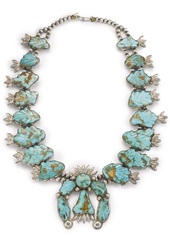 Silver and turquoise squash blossom necklace by Leekya Deyuse (Zuni, 1889-1966), sold for $23,750. 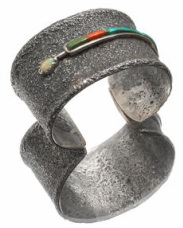 A Hopi bracelet by Charles Loloma (1921-1991), sold for $16,250. To celebrate the unveiling of their new textile galleries, the Denver Art Museum is kicking off 10 great textile shows, starting on May 19th. One of the shows entitled "Spun" is going to exhibit textiles from across the globe - from Navajo weavings to Victorian needlework. This along with 9 other shows are sure the create a buzz and an excellent cross-cultural perspective on textiles in the Mile High city.
For more information, click here: http://www.denverartmuseum.org/exhibitions/spun Tomorrow (May 9th), there is an excellent opportunity to attend a discussion at LACMA about "The Art of Looking". At this event they will be covering the unique art of print making by means of 19th Century woodblock printing and modern typography.
See more info here: http://www.lacma.org/event/gallery-discussion-8 Thursday, May 9, 2013, 12:30 pm It's clear that the Chinese buyers and dealers have become an integral part of the global art market in recent years, but is Chinese art present in the market to a similar extent?
This article from NY Times discusses the disparity between the strong presence of Chinese buyers and the relatively low visibility for China's Art. When conceptualizing this disparity, it is important to consider, "In artistic terms, is China a creator of value in this process, or mostly a receiver of value? And how can Chinese art become more visible around the world, getting into more museums and private galleries?" Please click here to read the full article: http://rendezvous.blogs.nytimes.com/2013/05/06/seeking-visibility-for-chinas-art/ There are endless articles and opinions on how to collect art, but I think it goes without saying that an informed decision is the best. It is the duty of every collector and art expert to constantly read and remain current with the trends of the art market. That said, maybe we shouldn't believe everything we read. I found this article that brings up some great tips to remember while reading about the art market. I certainly appreciate the authors last line - "If it is real professional advice that you seek, it’s probably best to take out your wallet and call an art advisor."
See the full article at the link below! http://www.blouinartinfo.com/news/story/889989/5-no-nonsense-tips-for-reading-about-the-art-market Hello there!
Welcome to my first post on the brand new BSA blog! In the future, I will be positing about art market trends, tricks for buying and selling at auction, and lots of other great topics in the ever-changing world of art and antiques. If there are any topics that you would like to see covered here, please contact me directly! |
AuthorAppraiser and Fine Art Enthusiast Archives
February 2016
Categories
All
|
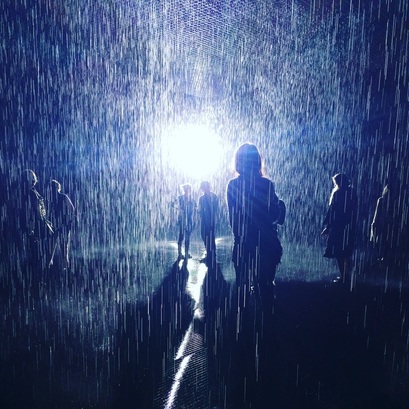
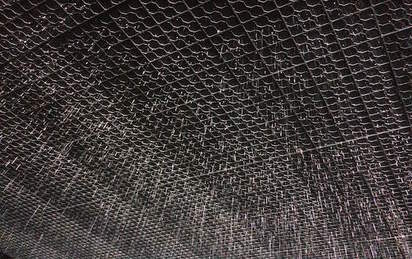
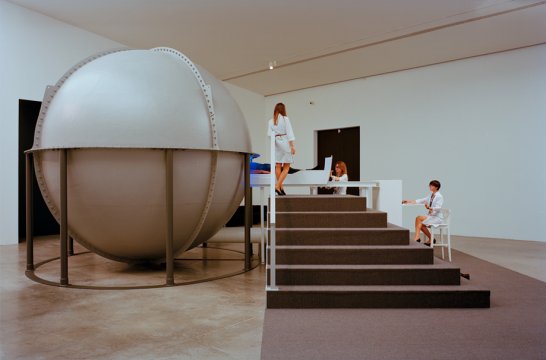
 RSS Feed
RSS Feed
